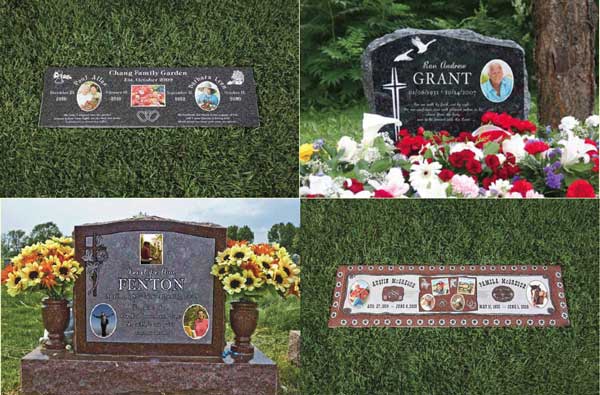A desire to remember and be remembered seems inherent in all of us. It manifests itself in little things like carving our initials on trees, or putting our handprints and names in wet cement. Culturally, we see it in grand monuments like the National War Memorial, or the simple, but beautiful grave markers at Office of Australian War Graves – Gardens of Remembrance.
We want to remember our loved ones. And be remembered ourselves.
And for many families creating a monument or headstone in granite gives them a sense of place and permanence that helps them move from grieving to remembrance.
When many people think of a permanent remembrance for their loved one, their first image is often of a traditional granite monument or headstone. And there is good reason for this. Granite monuments have been a traditional choice to mark a life since colonial times. Granite is a time-defying material, it can last for hundreds of year, and it allows for remembrances in all different shapes and sizes, from two-dimensional headstones, to fully realised three-dimensional upright monuments that truly capture a life.
Because of the great many choices families have in size and shape in granite, they can most often find something that meets their needs for permanence, solace, celebration of memories, and private reflection.
And new technologies are giving families new ways to personalise their headstones or monuments. For example, even on the simplest headstone, you can place a color permanent picture or pictures of your loved one. You can write poems, or summaries of a person’s life, all of which can be captured in granite permanently. And with upright monuments you have an almost unlimited flexibility to design or choose a monument that truly reflects a unique life. A ballerina, an angel, an angler, a golfer, and much more, all can be captured with today’s new design capabilities. And for an especially elegant look, you can put a semi-precious bronze memorial on a granite base. The choices you have are often limited only by your personal vision and taste.
Because of these new creative choices, many families are finding that coming together to design or write the words for a highly personal monument becomes a fulfilling and important part of moving from grieving to remembrance.

And these more personal ways of remembering are increasingly appealing to all families, whether they choose burial or cremation. Families are realising that having a permanent place to remember a loved one has tremendous value, not only for them and for today, but also for their children and grandchildren.
Choosing and personalising a headstone or monument can be as simple or as involved as you wish. Your cemetery professional can help show you your choices, and can ensure that you are free to concentrate on writing the poems, stories or providing the images you want on the headstone or monument. They will also be able to give you professional guidance on any special requirements that they may have regarding the size and shape of monuments and memorials. (Please be aware that most cemeteries do have certain restrictions. For example, some cemeteries only accept flat headstones; others have selected sections in which only certain types of monuments or headstones can be placed.)
Contacting your cemetery professional is the best way of getting the information you need to make the choice that is right for you and your family. To find An Authorised Remembrance Provider℠ near you, just click on “cemetery” in the search box on the bottom of this page.
Even in the case of a very personal and unique monument, your cemetery professional can help make the process simple.
